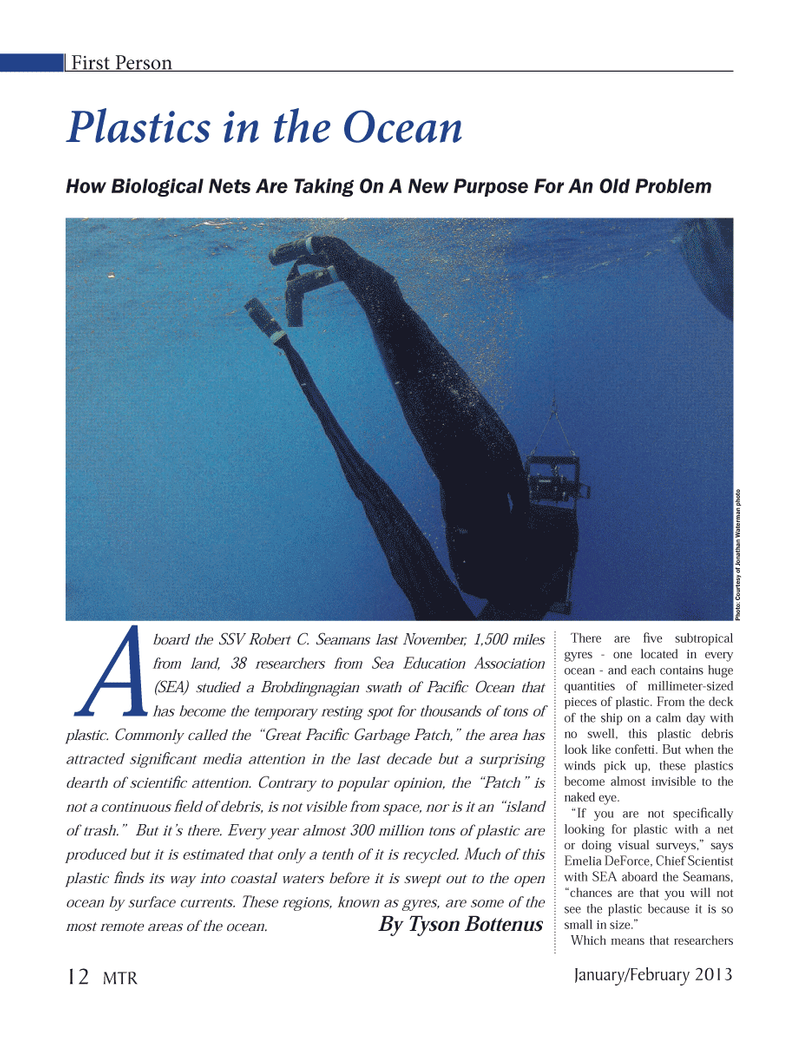
Page 12: of Marine Technology Magazine (January 2013)
Subsea Vehicle Report: Unmanned Underwater System
Read this page in Pdf, Flash or Html5 edition of January 2013 Marine Technology Magazine
First Person There are Þ ve subtropical gyres - one located in every ocean - and each contains huge quantities of millimeter-sized pieces of plastic. From the deck of the ship on a calm day with no swell, this plastic debris look like confetti. But when the winds pick up, these plastics become almost invisible to the naked eye. ÒIf you are not speciÞ cally looking for plastic with a net or doing visual surveys,Ó says Emelia DeForce, Chief Scientist with SEA aboard the Seamans, Òchances are that you will not see the plastic because it is so small in size.Ó Which means that researchers Plastics in the Ocean How Biological Nets Are Taking On A New Purpose For An Old Problem Photo: Courtesy of Jonathan Waterman photo Aboard the SSV Robert C. Seamans last November, 1,500 miles from land, 38 researchers from Sea Education Association (SEA) studied a Brobdingnagian swath of PaciÞ c Ocean that has become the temporary resting spot for thousands of tons of plastic. Commonly called the ÒGreat PaciÞ c Garbage Patch,Ó the area has attracted signiÞ cant media attention in the last decade but a surprising dearth of scientiÞ c attention. Contrary to popular opinion, the ÒPatchÓ is not a continuous Þ eld of debris, is not visible from space, nor is it an Òisland of trash.Ó But itÕs there. Every year almost 300 million tons of plastic are produced but it is estimated that only a tenth of it is recycled. Much of this plastic Þ nds its way into coastal waters before it is swept out to the open ocean by surface currents. These regions, known as gyres, are some of the most remote areas of the ocean. By Tyson Bottenus January/February 2013 12 MTRMTR #1 (1-17).indd 12MTR #1 (1-17).indd 121/28/2013 11:07:41 AM1/28/2013 11:07:41 AM

 11
11

 13
13
